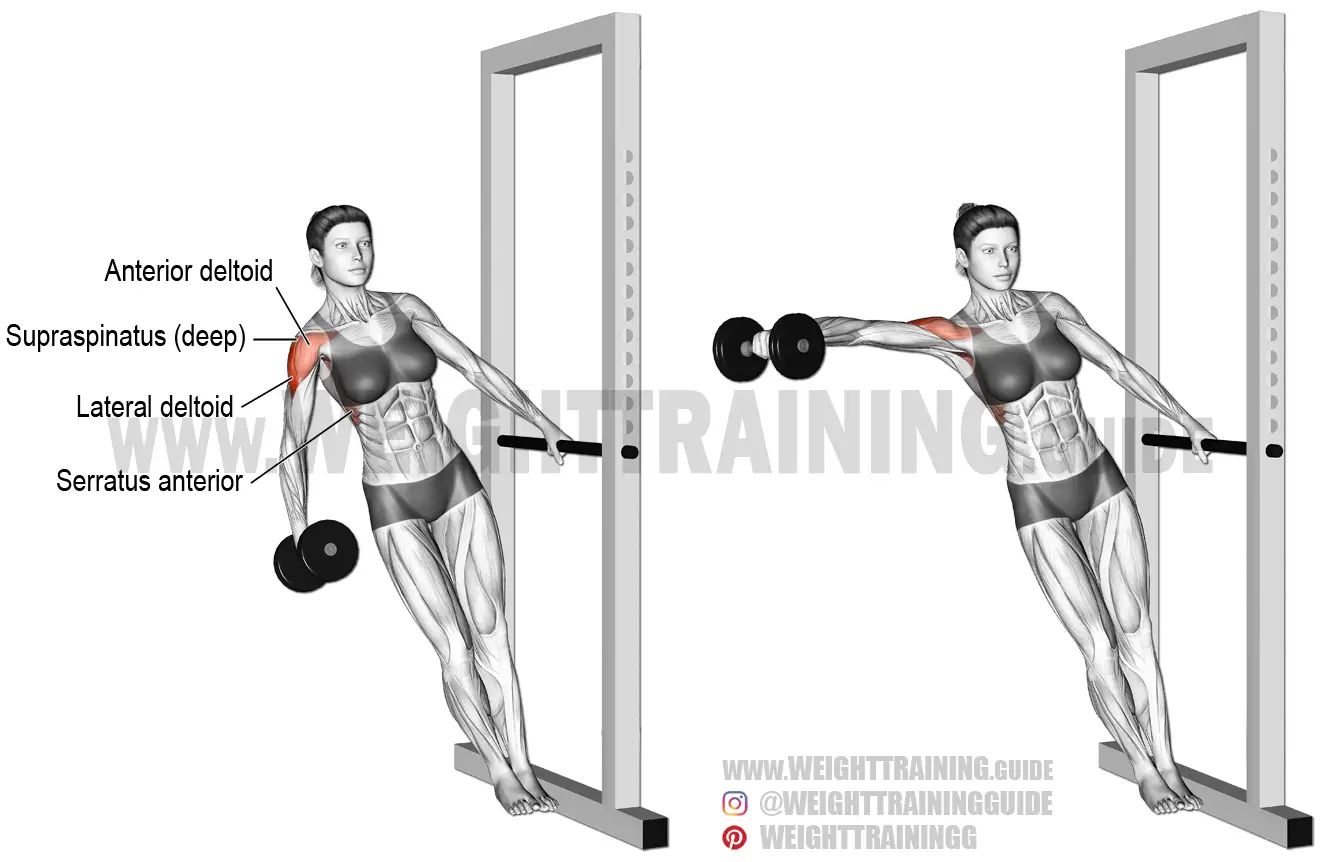
For anyone looking to tone their arms and improve their posture, the leaning lateral dumbbell raise is an exercise you should consider. This exercise targets the shoulders and upper back muscles, which are often neglected in other workouts. In this article, we will discuss the benefits of the leaning lateral dumbbell raise and how to perform it properly.
Benefits of Leaning Lateral Dumbbell Raise
The leaning lateral dumbbell raise provides a range of benefits for your overall fitness and health. Here are some of the key benefits:
1. Targets Shoulder Muscles

This exercise targets the deltoid muscles in the shoulders, which are essential for upper body strength and stability. By strengthening these muscles, you can improve your posture, reduce the risk of injury, and enhance your overall athletic performance.
2. Improves Upper Back Strength

The leaning lateral dumbbell raise also engages the upper back muscles, including the trapezius and rhomboids. These muscles are responsible for shoulder blade stability and support, which is essential for maintaining good posture and preventing injury.
3. Enhances Core Stability

During the exercise, you must engage your core muscles to maintain balance and stability. This helps to strengthen your core and improve your overall stability, which can benefit other exercises and daily activities.
4. Increases Muscle Definition

The leaning lateral dumbbell raise is an excellent exercise for sculpting the shoulders and upper back muscles, leading to improved muscle definition and a more toned physique.
How to Perform Leaning Lateral Dumbbell Raise
Before you start the exercise, make sure you have a pair of dumbbells that are appropriate for your fitness level. Here is how to perform the exercise:
1. Start in a Standing Position

Begin by standing with your feet shoulder-width apart and your knees slightly bent. Hold a dumbbell in each hand, with your palms facing towards your body.
2. Lean Forward

Slowly lean forward, keeping your back straight and your core engaged. Stop when your upper body is at a 45-degree angle to the floor.
3. Raise Your Arms to the Side

Keeping your elbows slightly bent, raise your arms out to the side until they are parallel to the floor. Hold for a second or two, then slowly lower your arms back to the starting position.
4. Repeat

Repeat the exercise for the desired number of repetitions, then switch to the other side. Aim for 2-3 sets of 10-12 repetitions on each side.
Tips for Performing Leaning Lateral Dumbbell Raise

Here are a few tips to keep in mind when performing the leaning lateral dumbbell raise:
1. Start with Light Weights

If you are new to this exercise, start with light weights to avoid injury and gradually increase the weight as you become more comfortable with the movement.
2. Engage Your Core

Remember to engage your core muscles throughout the exercise to maintain balance and stability.
3. Keep Your Elbows Slightly Bent

Keeping your elbows slightly bent throughout the exercise can help to reduce the risk of injury and improve muscle activation.
4. Control Your Movement

Make sure to control your movement throughout the exercise, avoiding any jerky or sudden movements that could cause injury.
Conclusion
The leaning lateral dumbbell raise is an effective exercise for targeting the shoulder and upper back muscles, improving posture, and enhancing overall fitness. By following the proper technique and incorporating this exercise into your workout routine, you can achieve improved muscle definition and a more toned physique.